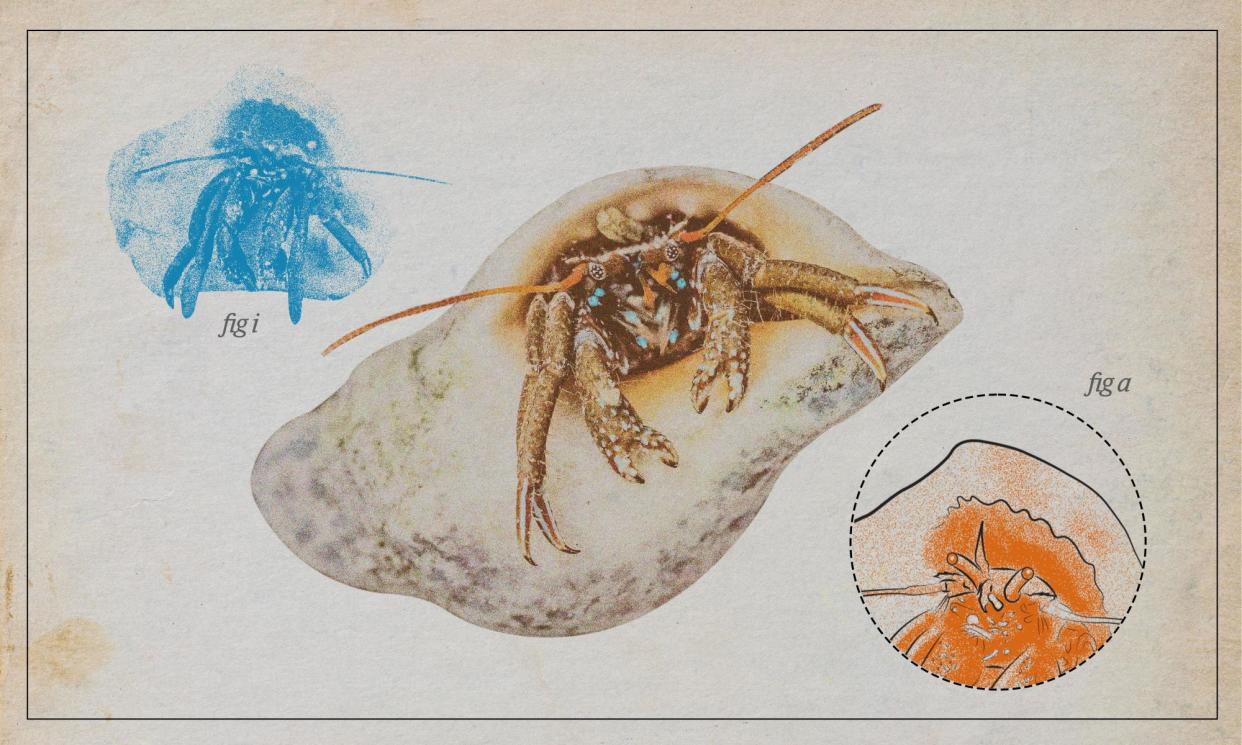St Piran’s hermit crab – an opportunist with stunning eyes

Saint Piran was a young Irish priest, it is said, who preached against King Óengus of Munster for planning to ditch his wife for a younger lady of the court. Piran was tied to a millstone and thrown off the highest cliffs into the sea.
But the stone floated and Piran was blown over to Cornwall, where he made another new home, enjoying feasting and fine wines and bringing Christianity to the druidic masses. His spells as a hermit attracted particular admiration and, when he rediscovered tin, his popularity among the locals became legendary.
Fifteen centuries later, a competition on BBC Springwatch led to (one of) Cornwall’s patron saints lending his name to an equally charismatic opportunist and hermit.
St Piran’s hermit crab only grows to 15mm and, like its saintly namesake, has a similar aptitude to making himself a new home. The crab takes up residence in empty periwinkles, dog whelks and other gastropod shells.
Historically, it has been a creature of warmer Mediterranean and eastern Atlantic waters. The coast of Cornwall became its new northern-most outpost when it colonised them in the 1960s. But it vanished not long after it arrived: populations entered a death spiral in the years after the Torrey Canyon oil spill in 1967. The detergents used to clean up the oil-wrecked rock pools and shoreline of the west coast did not help it either.
In 2016, it was discovered having returned to the south Devon coast – probably swept by currents from its nearest colonies in Brittany and the Channel Islands. Now warming seas appear to be assisting its spread around the south-west coast. It was recently found on Newquay beaches.
This crab is a good looker, with striking black-and-white-spotted eyes mounted on red eye stalks, bright red antennae and vivid blobs of red and electric blue on its legs and claws.
Unsurprisingly, given its size, it is shyer than the common hermit crab, and likes to curl up inside its shell and wait out all dangers.
So why not vote for an invertebrate that shows the resilience of the natural world, and cheer on the return of St Piran’s hermit crab – and our own capacity to appreciate such small miracles of life.
Welcome to the Guardian’s UK invertebrate of the year competition. Every day between 2 April and 12 April we’ll be profiling one of the incredible invertebrates that live in and around the UK. Let us know which invertebrates you think we should be including here. And at midnight on Friday 12 April, voting will open to decide which is our favourite invertebrate – for now – with the winner to be announced on Monday 15 April.

 Yahoo News
Yahoo News 
